2024 Toyota Prius Prime XSE Premium Review: Pleasure Cruise

We’ve been going about the 2024 Toyota Prius Prime all wrong.
After driving it once or twice and speaking to numerous colleagues, it seems unanimous: the Prime is the car most people need in most situations. It gives exactly what you need, and offers what you want, all while dramatically reducing your carbon footprint.
It’s going green made easy—and newly stylish.
But it’s the Prius Prime's design we’re almost taking for granted not even two years since the new styling debuted. Being the rational choice doesn't matter, instead, it’s the stand-out styling, clever and attractive interior, and driving dynamics that target the pleasure centers of our brain.
Toyota has a whole host of hybrids to help save fuel, but the Prius Prime is the one appealing to both head and heart.
2024 Toyota Prius Prime Quick Take
The 2024 Prius Prime pushes Toyota’s plug-in poster child into costly territory. Ignoring the eco-credentials the Prius has always been known for, Toyota has turned the Prius Prime into a genuinely desirable vehicle. This is a car you want–saving the trees is a happy addition.
What’s New for 2024:
With an all-new generation debuting last year, not much has changed for the Prime in 2024 save for a slight bump in price. The same six paint colors are available, and the same options and accessories. (Canada also gets a wicked-cool yellow.)
As a refresher, the Prime runs the same 2.0-liter, 150-horsepower engine as the regular Prius. A stronger electric motor contributes 161 horsepower all on its own, though the different power curves make for a total of 220 combined system horsepower. A larger-capacity, 13.6-kilowatt-hour battery pack is slung out back behind the rear seats. Charging takes around 11 hours from a standard outlet, or 4 with a 240-volt setup. Unlike the regular Prius, the Prime is strictly front-drive.
With the big-wheeled XSE Premium here, efficiency takes a slight hit, but we’re still talking 40 miles (64 kilometers) of all-electric range, 48 mpg (4.9 L/100 km) combined when the battery is depleted, and a dash to 62 mph (100 km/h) comfortably under 7 seconds when both systems are working in unison.
Exterior Style: Superstar Sex Appeal
Featuring the sort of windshield rake to make a Lambo blush, the Prius cuts a dramatic profile, especially in the rich red shade here. The swept-back headlights are easily the best iteration of Toyota’s “hammerhead” design so far, too. Normally black contrasting wheel arches would give off crossover vibes, but here in gloss black they only add to the drama, exaggerating the size of the wheel arches almost like a SuperGT car.
I’ve said it before and I’ll say it again: the rear treatment almost looks like the bodywork has been peeled back to reveal the taillight treatment underneath. It’s worth noting the way the outer edges dive downwards, providing a visual link to other family members as disparate as the Sienna and GR Supra.
Those spindly wheels look great, but I do have a soft spot for the chunky five-spokers on the base SE trim.
Powertrain and Fuel Economy: Great Everyday
In normal hybrid operation, the Prime doesn’t feel much different from the regular Prius. It happily keeps up with traffic, the responsive fifth-generation hybrid system doing a great job minimizing ICE time. With a good bit of charge in the battery, the Prime happily whirs along on only EV power; a little slower, but not by much, and oh so much more refined while doing it. If you’re not well-versed in the EV life, it can be a (welcome) bit of peace to travel around in near-silence.
As it was in the case of the RAV4 Prime, the Prius Prime handily beat its quoted electric range during the week. I hit closer to 70 km, and that was with a healthy blend of highway driving included. Also like its SUV sibling, the Prime allows owners to pick and choose where to deploy the electrons, or even to use the gas component to charge the battery. The latter is surprisingly effective: it naturally increases consumption, but on a 30-mile drive I gained back nearly half that.
Drivability: Surprises and Fun
Another area the Prius has rarely earned accolades: handling. This generation is as well-mannered as they’ve come, but point it towards a spaghetti-shaped bit of road and the latest Prius might just put a smile on your face. It’s not exactly light at 3,572 pounds (1,620 kilograms), but the majority of that weight gain has happened low down and close to the rear axle. The result is a car that remains planted once pointed towards a corner, with quick and accurate direction changes dialled in through that small-diameter steering wheel. Is the rim light on resistance and feedback? Of course: but it’s an easy one to learn and get comfortable with.
What’s more, the narrow, low-rolling-resistance tires bless the Prius with plainly telegraphed limits, ones you can safely work within without breaking the local speed limits. “Slow car fast” is alive and well.
I do wish there was more control of the regenerative braking. It’s fine as is, but being able to ratchet it up would elevate the sportier driving mode. Again—not something I ever expected to say in a Prius, but here we are.
Ride Quality and Comfort: Small Sacrifices
Let’s get back to the rational side for a sec: as fun as the Prius is, it needs to work as a daily driver. Thankfully, the Prime rides with a pliant softness that eats up all but the biggest bumps with only a muffled thump from somewhere aft of the driver’s seat. There is noticeable body roll, but just enough to remind the driver where the Prius’ limits lie. As I noticed on the first drive, while NVH is generally quite good, the doors do seem thin so the sounds of passing traffic tend to dominate, especially on the highway.
The front seats are reasonably comfortable in that typical Toyota way: a little short on underthigh support, but solid lateral support. I can never quite get the seats low enough for my liking: my hair just brushes the headliner on this model, likely on account of the glass roof. Since the twin openings aren’t exactly expansive, if I lived in the US—and in an aera that saw less than six months of snow—I’d be tempted to option the solar panel roof to at least make the most of the only-okay headroom.
The rear seat continues to be the current Prius’ weak point. To make that slinky shape a reality, headroom is tight, and legroom is only okay. I personally think it’s fine: there’s the thoroughly pragmatic 2025 Camry for those who need a proper, adult-friendly rear bench. This is a halo model, it can sacrifice a wee bit of practicality for style.
Interior Style: Cockpit Feel
Speaking of style, the Prius cabin is chock-full of it. The low-profile dashboard almost appears to be floating, while the red highlights (including ambient lighting) give it a welcome dash of color. I dig the fairing for the deep-set instrument cluster, increasing the cockpit feel so unique to this generation. It takes a little getting used to keeping the steering wheel so low in your lap, but the added visibility, not to mention illusion of space from it being further out of your peripheral, is great. Toyota has stuck to physical buttons for many of the climate controls, and the dual-plane setup front and center manages to fit a lot in a small space—and makes them easy to use at a glance.
There are a few nasty plastics here and there that take a bit of the shine off. The door panels are the most obvious, especially in the rear.
Tech and Safety: Yes
The top-shelf XSE Premium comes very well equipped with heated and ventilated front seats, dual-zone climate control, six (!) USB-C ports, an auto-dimming rearview mirror, and power hatch. This tester also includes rear heated seats, a 360-degree camera, parking assist, and digital rearview mirror: all are standard in Canada, and optional in America.
Like most of the systems bearing the brand name, the Prime’s eight-speaker JBL system is fine, but nothing to write home about.
The 12.3-inch infotainment screen is one of the better mainstream applications. The larger setup avoids the crammed feeling the 8.0-incher in lesser models has on satellite radio, while maintaining its quick response times and sharp graphics. Wireless Apple CarPlay and Android Auto work without issue. This tester still required a few additional pokes on screen to flit between the native menu and CarPlay. We’ve seen the updated setup with permanent menu buttons on the 2024 Tacoma, so it can’t roll out into other models quick enough.
The digital instrument cluster isn’t the snazziest, but it gets all the important info to the driver, and sits close enough to the view of the road as to negate the need for a head-up display.
Value: Dollars and Sense
In America, the Prius Prime SE kicks off the plug-in range at $34,070 including destination, putting it less than $200 above regular Prius XLE AWD. Moving up to the mid-level XSE is $37,320, just slightly below the highest Prius (Limited AWD). This XSE Premium starts at $40,765, before adding premium paint and all the options bar the solar roof for a final tally of $42,825.
Canada’s pricing is even closer. The three Prime trims carry over, but there are only two AWD Prius models, so the price gap is just $1,900 CAD between entry models. The Prime SE lists at $41,410 CAD, the XSE for $46,150 CAD ($500 CAD above the Limited AWD), and the XSE Premium for $49,910 CAD. The premium paint pushes this particular tester up to $50,165 CAD. All models qualify for a $5,000 CAD federal tax incentive as well as provincial amounts.
Final Thoughts: 2024 Toyota Prius Prime XSE Premium Review
That might seem like a lot of coin, but a top-level Camry is around there these days too. Truth be told, there isn’t much on the market that can match the 2024 Prius Prime’s blend of sharp looks, impressive fuel economy, and genuine fun-to-drive nature.
Become an AutoGuide insider. Get the latest from the automotive world first by subscribing to our newsletter here.
Pros | Cons |
|---|---|
So dang stylish | Loses passenger space |
Excellent fuel economy and EV range | Front-drive only |
Low-key fun to drive | How much for a Prius? |
2024 Toyota Prius Prime FAQs
- Q: How much horsepower does the 2024 Toyota Prius Prime have?
- A: This hybrid now boasts 220 horsepower.
- Q: What is the fuel economy of the 2024 Toyota Prius Prime?
- A: The 2024 Prius Prime XSE Premium is rated at 114 mpg-equivalent (2.1 Le/100 km).
- Q: How much does the 2024 Prius Prime XSE Premium cost?
- A: This top Prius Prime trim costs $40,765 ($50,165 CAD) including destination.
2024 Toyota Prius Prime XSE Premium | |
|---|---|
Engine: | 2.0L I4 w/ plug-in hybrid |
Outputs: | 220 hp, 139 lb-ft |
Transmission: | E-CVT, FWD |
US Fuel Economy (mpg / mpge): | 48 / 114 |
CAN Fuel Economy (L/100 km / Le/100 km): | 4.9 / 2.1 |
Starting Price (USD): | $34,070 (inc. dest.) |
As-Tested Price (USD): | $42,825 (inc. dest.) |
Starting Price (CAD): | $41,410 (inc. dest.) |
As-Tested Price (CAD): | $50,165 (inc. dest.) |

Kyle began his automotive obsession before he even started school, courtesy of a remote control Porsche and various LEGO sets. He later studied advertising and graphic design at Humber College, which led him to writing about cars (both real and digital). He is now a proud member of the Automobile Journalists Association of Canada (AJAC), where he was the Journalist of the Year runner-up for 2021.
More by Kyle Patrick























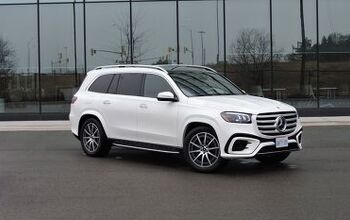
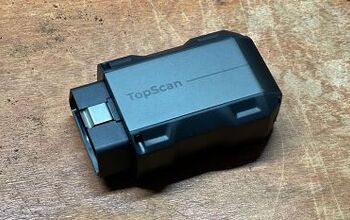



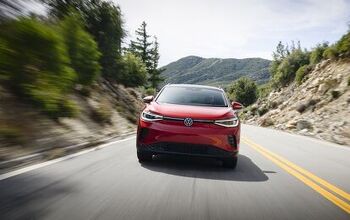


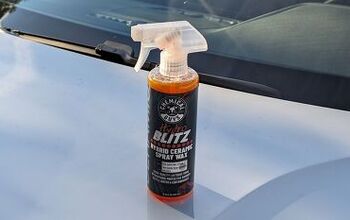






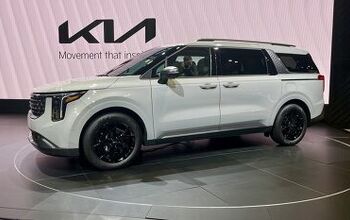

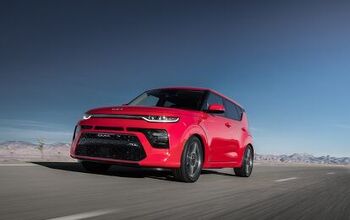
Comments
Join the conversation
So are all Canadian models AWD or is a strictly FWD still available??